37 UMMA Objects
37 UMMA Objects
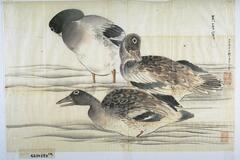
Nishiyama Kan'ei
Ducks
1884
Museum purchase made possible by the Margaret Watson Parker Art Collection Fund
1990/1.198
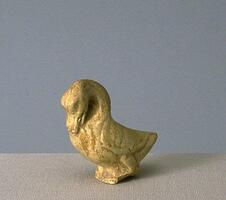
Chinese (Chinese (culture or style))
Duck
600 – 632
Gift of Willard A. and Marybelle Bouchard Hanna
1991/2.17
![In this monumental scroll, Nukina Kaioku has brushed a Chinese poem of his own composition, on the enduring theme of nature as refreshment for the spirit. Note his masterful variation of thick and thin strokes, wet and dry ink, stately and rapid movement.<br />The verses may be tentatively rendered into English as follows:<br /> Mandarin ducks enjoy the fresh water; their graceful forms glow as they pass through channels in the reeds.<br /> Pushing beyond the thickets [to the open pond], they call to one another again and again in the dawn.<br /> A crimson mist breaks through gaps in the glade, its glow warming hidden nests.<br /> Waking up with nothing to do, [I came here] to playfully row among the spring waves. In this monumental scroll, Nukina Kaioku has brushed a Chinese poem of his own composition, on the enduring theme of nature as refreshment for the spirit. Note his masterful variation of thick and thin strokes, wet and dry ink, stately and rapid movement.<br />The verses may be tentatively rendered into English as follows:<br /> Mandarin ducks enjoy the fresh water; their graceful forms glow as they pass through channels in the reeds.<br /> Pushing beyond the thickets [to the open pond], they call to one another again and again in the dawn.<br /> A crimson mist breaks through gaps in the glade, its glow warming hidden nests.<br /> Waking up with nothing to do, [I came here] to playfully row among the spring waves.](/media/W1siZiIsIjIwMjIvMDUvMjUvNDA4bXZmMmt5bF9kZWZhdWx0LmpwZyJdLFsicCIsInRodW1iIiwiMjQweDIwMCJdXQ?sha=1fda6bad9ec42b3f)
Nukina Kaioku
Calligraphy: Watching Ducks on a Spring Morning
1840 – 1863
Museum purchase made possible by the Margaret Watson Parker Art Collection Fund
1987/2.45
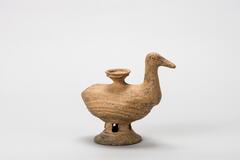
Korean (Korean (culture or style))
Vessel in the shape of a duck
200 – 399
Gift of Bruce and Inta Hasenkamp and Museum purchase made possible by Elder and Mrs. Sang-Yong Nam
2004/1.188

Wang Mengbai
Pair of Mandarin Ducks (Scroll)
1915 – 1925
Gift of Sharlynn and Andrew Circo, in memory of Sotokichi Katsuizumi
2011/2.188
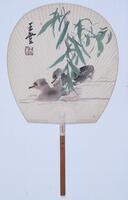
Wang Mengbai
Pair of Mandarin Ducks (Fan)
1915 – 1925
Gift of Sharlynn and Andrew Circo, in memory of Sotokichi Katsuizumi
2011/2.189
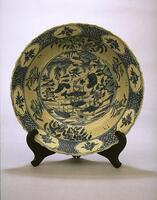
Chinese (Chinese (culture or style))
Bowl
1580 – 1650
Gift of the William T. and Dora G. Hunter Collection
2002/2.8
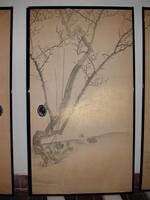
Yokoyama Seiki and Okajima Seikō;Okajima Seikō
A side: Mandarin ducks and plum trees, by Yokoyama SeikiB side: Lakeside landscape, by Okajima Seikô
1850 – 1865
Gift of Helmut Stern
2003/1.405.3
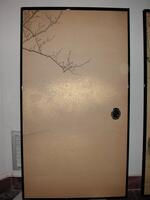
Yokoyama Seiki and Okajima Seikō;Okajima Seikō
A side: Mandarin ducks and plum trees, by Yokoyama SeikiB side: Lakeside landscape, by Okajima Seikô
1850 – 1865
Gift of Helmut Stern
2003/1.405.4
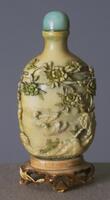
Chinese (Chinese (culture or style))
Ivory snuff bottle with design of peonies and mandarin ducks
1875 – 1925
Gift of Mr. Robert W. Coggan
1980/2.77
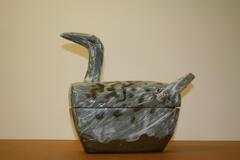
Kim YikYung
Duck-Shaped Vessel
2004
Museum purchase in honor of Elder and Mrs. Sang-Yong Nam, made possible with gifts in memory of Stephen and Sara Stewart Rogers
2010/2.30
Loading…

